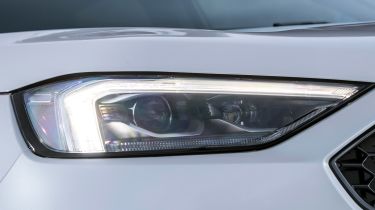Drivers confused by car daytime running lights
Drivers may be relying on daytime running lights in dull, overcast conditions, often leaving the rear of their car without illumination

Drivers are confused by daytime running lights (DRLs) and what the legal requirement for them being fitted to vehicles is, according to new research.
An RAC Opinion Panel survey of 2,061 motorists found 62 per cent of drivers said they have seen other cars and vans driving in dull, overcast conditions without any rear lights on, while noting they did have lights on at the front; 15 per cent said they hadn’t noticed this and 23 per cent were unsure.
DRLs have been legally required to be fitted at the front of all new EU cars and small vans since 2011, but even though some manufacturers choose to include them at the rear, this is not compulsory.
When the survey respondents were asked whether the vehicle they drive most frequently has DRLs, 47 per cent said it didn’t, 29 per cent said it had them at the front only and 14 per cent said it had them at the front and rear. In addition, eight per cent knew their car did have DRLs at the front but were unsure about the rear.
RAC road safety spokesperson Pete Williams said: “This is potentially a very worrying finding as it implies that many motorists are driving without any rear lights believing that because they have running lights that switch on automatically at the front, they are also on at the rear.
“Alternatively, and arguably just as concerning, these drivers could simply have decided the light conditions were not bad enough to merit turning on their dipped lights or sidelights.”
He advised drivers to check whether their cars were fitted with DRLs or not and if they’re just at the front or at the rear as well.
The EU investigated the effectiveness of DRLs in 2003 and found there was a likely reduction of multi-party collisions of between five and 15 per cent when the lights were fitted. However, an American study from 2008 contradicted this by pegging the same figure at 0.3 per cent.
Find a car with the experts



